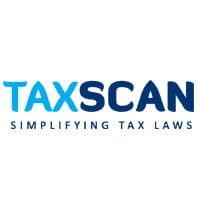Family Business of Money Lending for 20 Years: ITAT upholds Addition of Excess Income as ‘Business Income’ [Read Order]
The tribunal directed the Assessing Officer to re-compute the income and demand payable
![Family Business of Money Lending for 20 Years: ITAT upholds Addition of Excess Income as ‘Business Income’ [Read Order] Family Business of Money Lending for 20 Years: ITAT upholds Addition of Excess Income as ‘Business Income’ [Read Order]](https://www.taxscan.in/wp-content/uploads/2024/07/ITAT-Money-Lending-Income-Tax-Appellate-Tribunal-ITAT-Chennai-Family-Business-Business-Income-taxscan.jpg)
The Chennai Bench of the Income Tax Appellate Tribunal (I TAT ) upheld the addition of excess income as 'business income' for a family engaged in the money lending business for 20 years.
The appeals by Rameshlal Kailash and Fatichand Rameshlal for Assessment Year 2017-18 arose from a common order by the Commissioner of Income Tax (Appeals), regarding identical assessments framed by the Assessing Officer ( AO ) under Section 143(3) of the Income Tax Act. The primary issue was to determine the heads of income under which the impugned additions would fall.
The assessee admitted an income of Rs. 343.40 Lacs in the return of income, scrutinised to verify cash deposits during the demonetisation period. The family, subjected to a survey under Section 133A on 26-09-2016, admitted certain income as ‘Business Income’ and paid due taxes.
The assessee had deposited Rs. 104 Lacs in four bank accounts, attributed to earlier income and cash balance. Additional income of Rs. 190 Lacs was offered during the survey, covering the stated cash deposits.
The assessee’s son, during the survey, stated that the family managed a money lending business and provided details of outstanding debtors’ balances totaling Rs. 1231 Lacs. The family did not maintain books of accounts but reflected Rs. 741 Lacs in their income tax statements as of 31-03-2016, with a differential of Rs. 490 Lacs for the current financial year. The assessee’s son offered additional income of Rs. 190 Lacs, while the father offered Rs. 300 Lacs, both out of unexplained sources of income.
The AO opined that the additional income was to be offered as ‘income from other sources’ rather than ‘business income’ due to a lack of substantiation that advances were from the money lending business.
The AO assessed the income as undisclosed investments under Section 69, subject to tax under Section 115BBE, reducing the business income by Rs. 190 Lacs and bringing it to tax as ‘income from other sources.’
During appellate proceedings, the assessee reiterated that the income was unaccounted business income, furnishing a list of debtors and confirmation letters from borrowers. The CIT(A), noting that promissory notes relating to excess investment in current assets were found during the survey, confirmed the AO’s decision.
The CIT(A) relied on the High Court of Madras in the case of SVS Oils Mills Ltd. vs. ACIT, concluding that the sources of the additional Rs. 4.90 Crores were unexplained.
The two-member bench of Manu Kumar Giri (Judicial Member) and Manoj Kumar Aggarwal (Accountant Member) found that the assessee family had been engaged in money lending for over 20 years, with promissory notes as current assets.
The bench noted that sundry debtors would change continuously due to advances given and received back. The differential was offered as undisclosed income by the assessee, arising from the money lending business.
The ITAT concluded that the excess debtors were from the business and taxable as ‘business income.’ The ITAT’s decision was supported by similar cases, including the Chennai Tribunal in M/s Mookambika Impex vs. DCIT and M/s Overseas Leathers vs. DCIT.
The Tribunal upheld the assessee’s treatment of additional income as ‘Business Income,’ directing the AO to re-compute the income and demand payable and directed the CIT(A) to adjudicate the issue on merits. Both appeals were allowed.
To Read the full text of the Order CLICK HERE
Support our journalism by subscribing to Taxscan premium. Follow us on Telegram for quick updates
Shri Rameshlal Kailash vs ITO , 2024 TAXSCAN (ITAT) 800 , Shri N. Arjunraj , Shri AR V Sreenivasan

